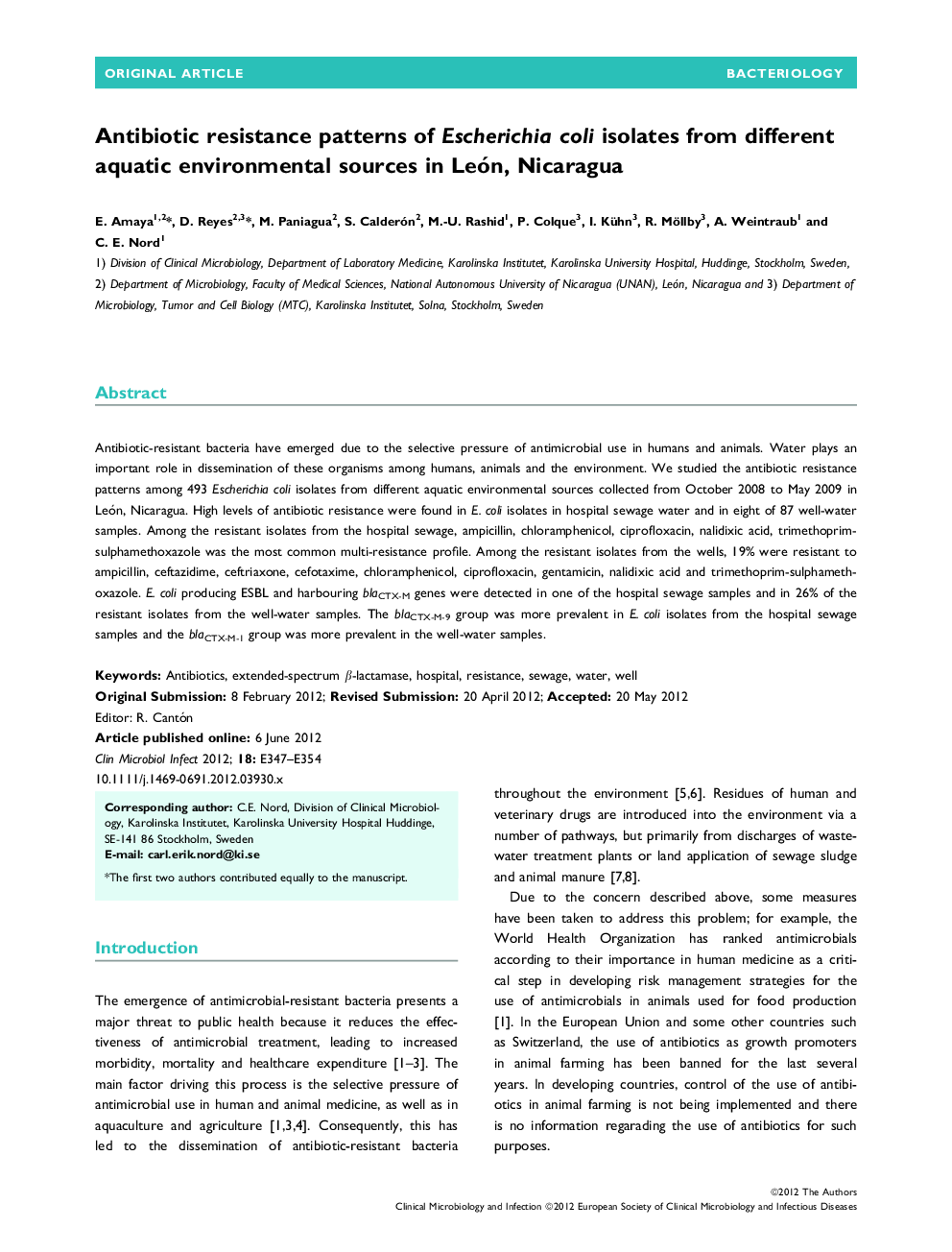| Article ID | Journal | Published Year | Pages | File Type |
|---|---|---|---|---|
| 3397186 | Clinical Microbiology and Infection | 2012 | 8 Pages |
Antibiotic-resistant bacteria have emerged due to the selective pressure of antimicrobial use in humans and animals. Water plays an important role in dissemination of these organisms among humans, animals and the environment. We studied the antibiotic resistance patterns among 493 Escherichia col/isolates from different aquatic environmental sources collected from October 2008 to May 2009 in Leon, Nicaragua. High levels of antibiotic resistance were found in E. coli isolates in hospital sewage water and in eight of 87 well-water samples. Among the resistant isolates from the hospital sewage, ampicillin, chloramphenicol, ciprofloxacin, nalidixic acid, trimethoprim-sulphamethoxazole was the most common multi-resistance profile. Among the resistant isolates from the wells, 19% were resistant to ampicillin, ceftazidime, ceftriaxone, cefotaxime, chloramphenicol, ciprofloxacin, gentamicin, nalidixic acid and trimethoprim-sulphameth-oxazole. E. coli producing ESBL and harbouring blaCTX-M genes were detected in one of the hospital sewage samples and in 26% of the resistant isolates from the well-water samples. The blaCTX-M-9 group was more prevalent in E. coli isolates from the hospital sewage samples and the blaCTX-M-1 group was more prevalent in the well-water samples.
